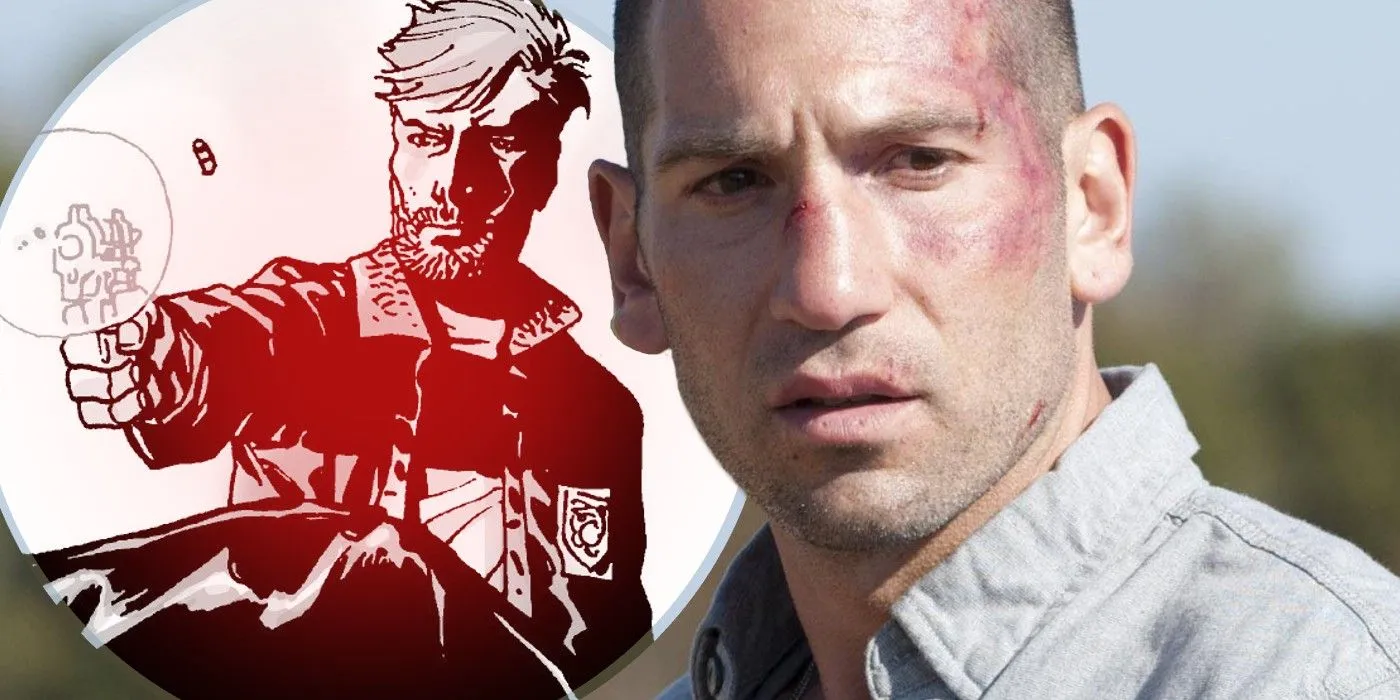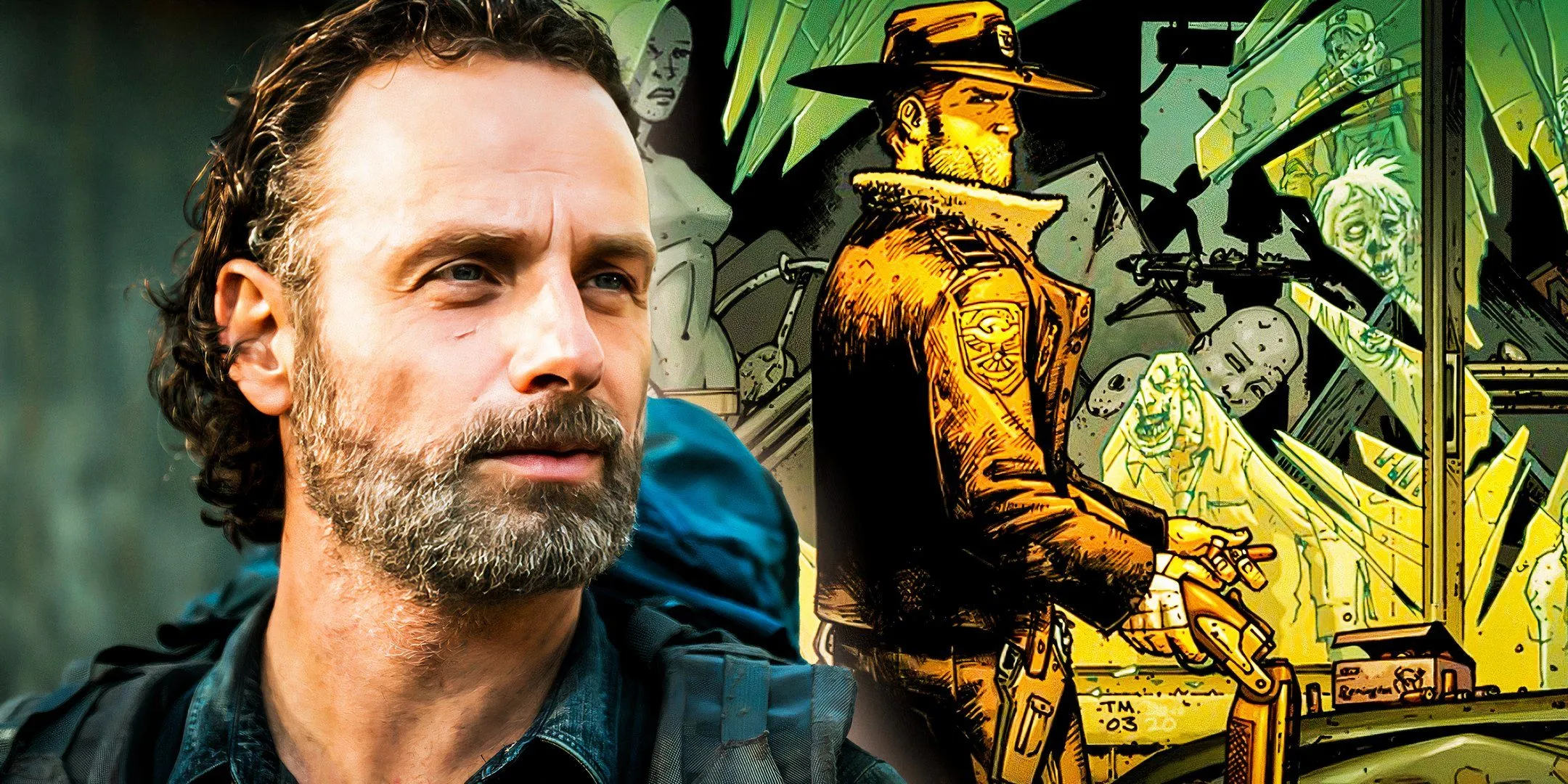
Currently, The Walking Dead stands as a formidable media phenomenon with an extensive range of TV spin-offs, video games, and an immensely popular original comic series. However, the inception of this franchise was nearly unrecognizable. This article delves into the transformative journey of Rick Grimes’ narrative, revealing the critical alterations made by creator Robert Kirkman—most notably the decision to keep Rick alive longer than originally planned.
In the second issue of The Walking Dead Deluxe, Kirkman unveils the initial pitch he submitted to Image Comics alongside Tony Moore. The pitch contains numerous notable differences from the familiar storyline, including changes in character names—’Lori’ was initially ‘Carol’ and the Grimes family was originally from Pittsburgh. The most significant departure, however, involves Rick’s introduction: instead of awakening from a coma, he begins his story at home with his family.

The memorable scene where Rick emerges from a coma to confront the post-apocalyptic landscape defines The Walking Dead. This introduction immerses viewers in an active and chaotic environment where tragedy has already unfolded over several weeks. Rick’s harrowing journey begins as he navigates an abandoned hospital before stepping into a decimated world in search of his family, instilling a powerful impetus from the outset. However, it’s fascinating to consider that Rick could have started his story on the couch, passively viewing the collapse of civilization unfold on television.
Kirkman has remarked that the original opening to The Walking Dead “was terribly cliché, now that I look back on it.”
The Absence of Rick Grimes’ Coma in the Original Draft
Carl and Lori: Integral from the Start






In The Walking Dead Deluxe #2, Kirkman illustrates how Rick and Lori initially discover the zombie outbreak through a news broadcast. Unfortunately, Rick misinterprets the alarming reports as a hoax reminiscent of War of the Worlds, leading to his first encounter with a zombie. This alternative opening significantly alters the narrative dynamics, placing Rick in a scenario with both Lori and Carl from the beginning—a stark contrast to his solo emergence into an already decayed world. This shift removes the setup for the tumultuous relationship between Lori and Shane, which becomes pivotal to the series’ early conflict.
Kirkman recalls receiving feedback from marketing director Erick Stephenson, who criticized the original concept as “a lame horror movie opening.”Reflecting on it now, Kirkman acknowledges that it was indeed cliché, prompting him to re-envision the opening that would later captivate comic and television audiences alike.

Interestingly, there have been discussions surrounding the inspiration for The Walking Dead and its similarities to 28 Days Later. While some speculate that the comic was influenced by the film, Kirkman has maintained he only viewed Danny Boyle’s work after the publication of The Walking Dead. It’s notable that the narrative of waking in a hospital post-apocalypse isn’t new, tracing back to classic works like the 1951 novel Day of the Triffids.

Despite the charm in Kirkman’s original concept, the decision to add Rick’s coma undeniably enhanced the storyline. The profound implications of this decision are further layered when considering the initial intentions behind its inclusion…
An Intended Connection to George A. Romero’s Night of the Living Dead
A News Report to Connect Comic and Film

It appears that Kirkman’s original approach to The Walking Dead was intended as a homage to the classic film Night of the Living Dead. As noted by CBR, the comic was conceived as a tie-in to Romero’s iconic movie, leveraging the fact that it had recently entered the public domain. This initial concept included a recreated news segment, directly referencing the film.
In this context, it becomes clear why Kirkman aimed to establish this connection at the onset of the series. As the comic evolved into a standalone entity, the plans merely served as a launching point—paving the way for The Walking Dead to grow into its unique and influential narrative, ultimately forging its own identity outside of Romero’s legacy.
Initially, Kirkman envisioned The Walking Dead as part of a horror/sci-fi trilogy that would explore various threats to the characters adapted from the same universe. This ambitious vision was just the first of many revolutionary transformations that would shape the series into its acclaimed form.
Transformations in The Walking Dead’s Initial Vision
Key Character Changes and Narrative Flexibility





Kirkman’s revisions to the opening scene marked just the beginning of a series of significant changes to the narrative framework of The Walking Dead. From shifting character arcs and pivotal storylines to reimagining the deeper themes of the series, Kirkman’s creative journey has been intricate. Originally, he envisioned The Walking Dead as a part of a trilogy where the same characters would confront different horrors across varied narratives, echoing structures seen in Stephen King’s transformative works.
The series’ trajectory further shifted when Kirkman contemplated a grim ending where zombies would completely eradicate humanity, a fate he briefly shared with Andrew Lincoln, the actor who portrayed Rick. Moreover, the character dynamics were set to undergo radical changes, with early plans featuring Rick being killed off sooner than anticipated—envisioning a scenario where Carl would inherit the storyline after Shane’s conflict escalated to a lethal confrontation with Rick.
Another pivotal alteration arose from Charlie Adlard, the artist who significantly contributed to the series. Adlard’s suggestion to leave Negan alive after Glenn’s assassination introduced a notable thematic depth, allowing for Rick’s philosophy to potentially influence a major antagonist instead of simply enacting revenge.

In terms of conclusions, Kirkman also envisioned an ending that diverged from the more optimistic resolution ultimately chosen. Early concepts proposed a somber flash-forward showcasing a statue of Rick—his legacy overshadowed by roaming zombies, suggesting humanity’s eventual downfall. Kirkman shared this vision with Nicotero and Lincoln but later shifted toward a narrative closure that showcased humanity’s tenacity to rebuild.
Every iconic pop culture franchise has its ‘what ifs,’ but the evolution of The Walking Dead from its early concept stages to the beloved series we recognize today exemplifies a remarkable journey of creativity and adaptation.
Source: Brian Cronin, CBR




Leave a Reply